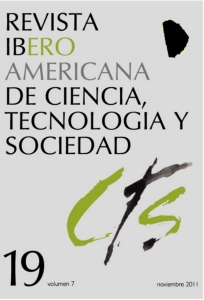Multiple realizability and artifact kinds
DOI:
https://doi.org/10.52712/issn.1850-0013-737Keywords:
multiple realizability, kinds, artifactsAbstract
The principle of multiple realizability is a good guide to our understanding of the artificial world. Whoever takes this principle as a guide faces the challenge of finding the appropriate level of functional description in order to shed light on the ontology of the artificial; at the same time, he or she faces the challenge of explaining how two types of realizations perform the same function, and how these realizations are ontologically different in a relevant sense. In this paper we examine the position of those who promote that arteficts can be grouped into nominal kinds, as well as the position of those who promote that they can be collected under real kinds. Finally, we suggest that it could be possible to preserve the principle of multiple realizability in a context where taxonomies depend on the descriptions of artifacts promoted by our practices, and on our learning about how there are exemplars of artifacts that realize functions differently.
Downloads
References
CARRARA, M. y VEERMAS, P. E. (2009): “The fine-grained metaphysics of artefactual and biological functional kinds”, Synthese, 169, pp. 125-143.
DENNETT, D. (1987): The Intentional Stance, Nueva York, Basil Blackwell.
HOUKES, W. y MEIJERS, A. W. M. (2006): “The ontology of artefacts: The hard problem”, Studies in History and Philosophy of Science, 37, pp. 118-131.
LAWLER, D. y VEGA, J. (2010): “Clases artificiales”, Azafea. Revista de Filosofía 12, Salamanca, Universidad de Salamanca, pp. 119-147.
SHAPIRO, L. (2000): “Multiple Realization”, Journal of Philosophy, XCVII, nº 12, pp. 635-54.
SIMON, H. (1969): The Sciences of the Artificial, Cambridge, Mass., MIT Press.
WIGGINS, D. (2001): Sameness and Substance Renewed, Cambridge, Cambridge University Press.
WITTGENSTEIN, L. (1988): Investigaciones filosóficas, trad. A. García Suárez y U. Moulines, Barcelona, Crítica.
Downloads
Published
How to Cite
Issue
Section
License
Copyright (c) 2024 CC Attribution 4.0

This work is licensed under a Creative Commons Attribution 4.0 International License.
All CTS's issues and academic articles are under a CC-BY license.
Since 2007, CTS has provided open and free access to all its contents, including the complete archive of its quarterly edition and the different products presented in its electronic platform. This decision is based on the belief that offering free access to published materials helps to build a greater and better exchange of knowledge.
In turn, for the quarterly edition, CTS allows institutional and thematic repositories, as well as personal web pages, to self-archive articles in their post-print or editorial version, immediately after the publication of the final version of each issue and under the condition that a link to the original source will be incorporated into the self-archive.











